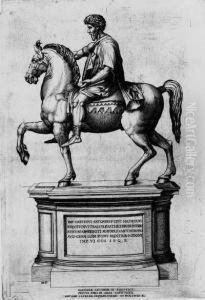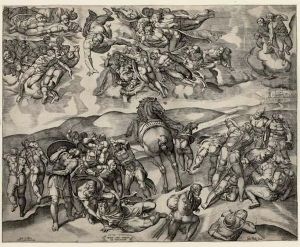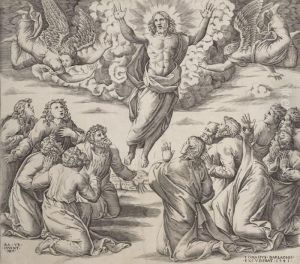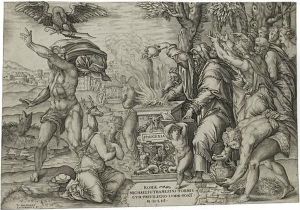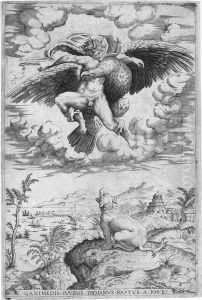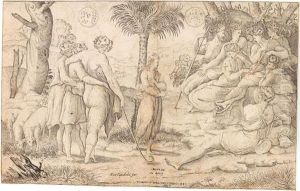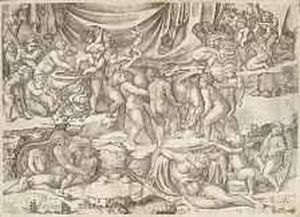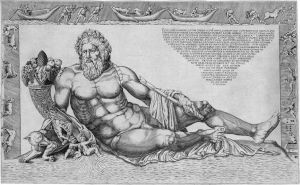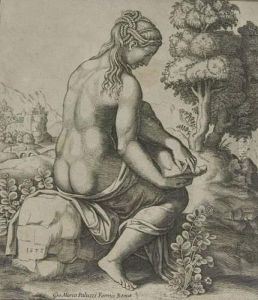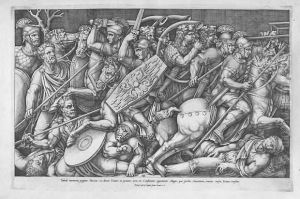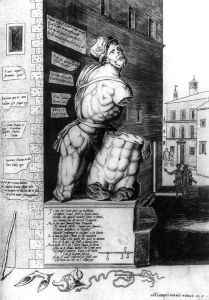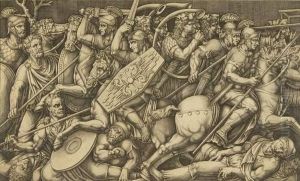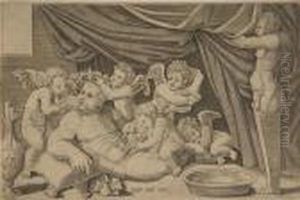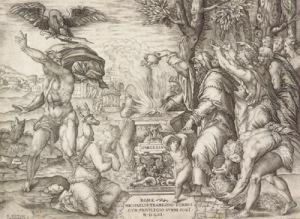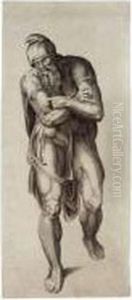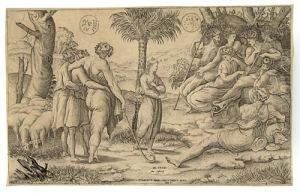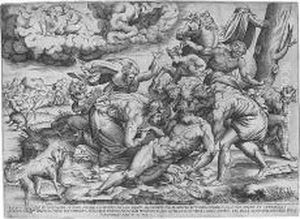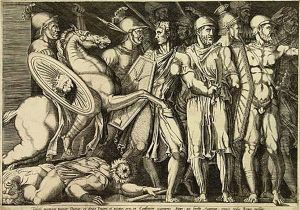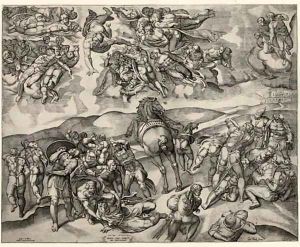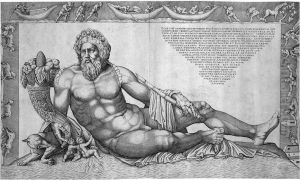Nicolas Beatrizet Paintings
Nicolas Beatrizet was a French engraver and printmaker of the Renaissance period, whose work is characterised by its technical skill and classical style. Although the exact dates of his birth and death are not definitively known, it is generally accepted that he was born around 1507 to 1515 and died around 1565 to 1566.
Beatrizet is believed to have originated from Lorraine, a region in France, but he spent a significant portion of his career in Rome, Italy, which was a hub for artists and the arts during the Renaissance. His move to Rome allowed him to be in the midst of the period's most significant artistic developments and to work with prominent figures of the time.
In Rome, Beatrizet came under the influence of the leading engravers of the Roman school, such as Marcantonio Raimondi, from whom he learned the art of engraving. His work was greatly influenced by the classical themes and the rebirth of Greco-Roman art that marked the era. He became known for his reproductions of famous artworks, particularly those by Michelangelo, Raphael, and other Italian masters. His engravings served to disseminate the Italian Renaissance style throughout Europe and contributed to his reputation as a master engraver.
Beatrizet's work was not limited to reproductions; he also created original compositions as well as maps and topographical prints. Among his notable works are the series of engravings depicting the 'Labors of Hercules' and his detailed maps of ancient Rome, which reflected his deep engagement with antiquarian interests.
Beatrizet's style is characterized by a strong attention to detail, a fine technique, and elaborate compositions. His prints were highly esteemed for their clarity, precision, and faithfulness to the original works. His ability to convey the depth and texture of the subjects he engraved added a distinctive quality to his prints.
Despite his significant contributions to the art of engraving, Nicolas Beatrizet is not as widely recognized as some of his contemporaries. Nonetheless, his works are considered important for the study of Renaissance art and the history of printmaking. They continue to be of interest to collectors, scholars, and enthusiasts of the period's art.
Beatrizet's death is believed to have occurred in Rome, but like much of his life, the specifics are not well-documented. His legacy lives on through his engravings, which remain a testament to the artistic fervor and technical excellence of the Renaissance period.
